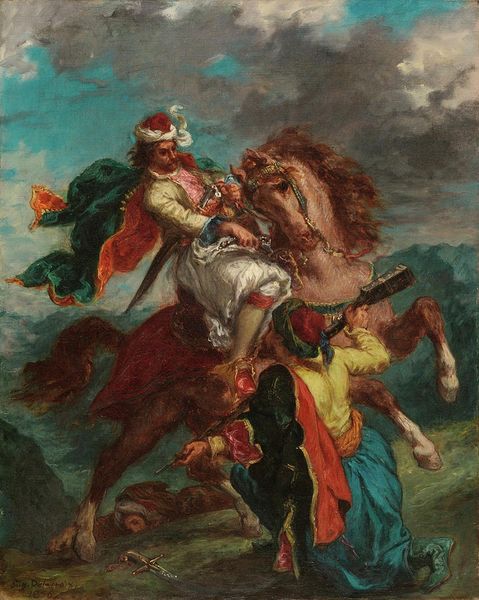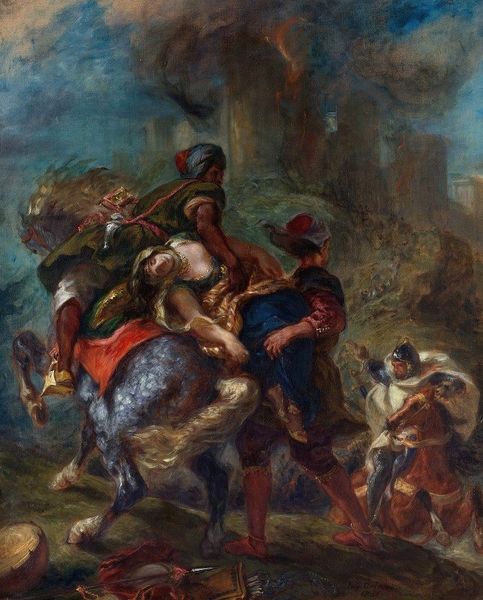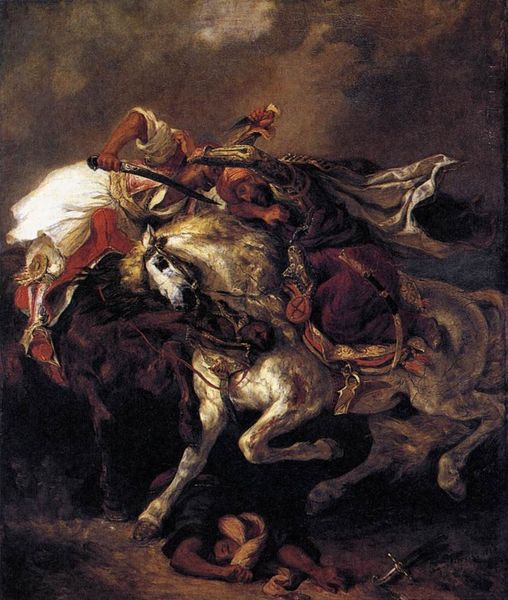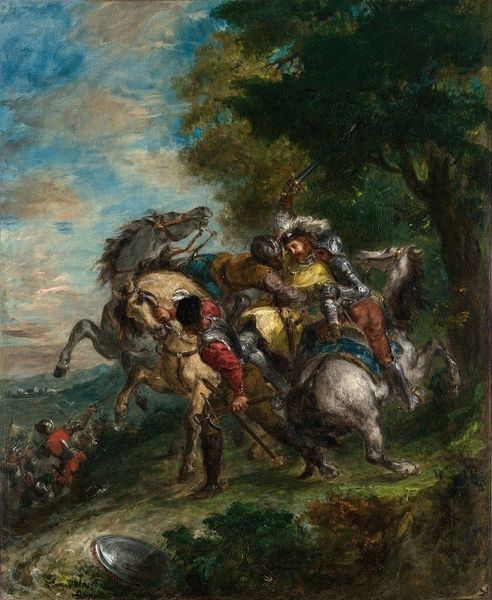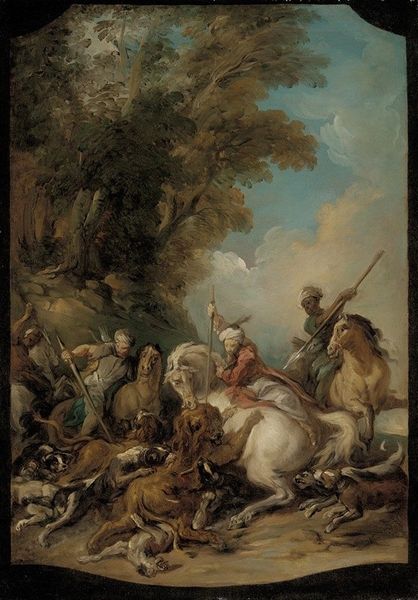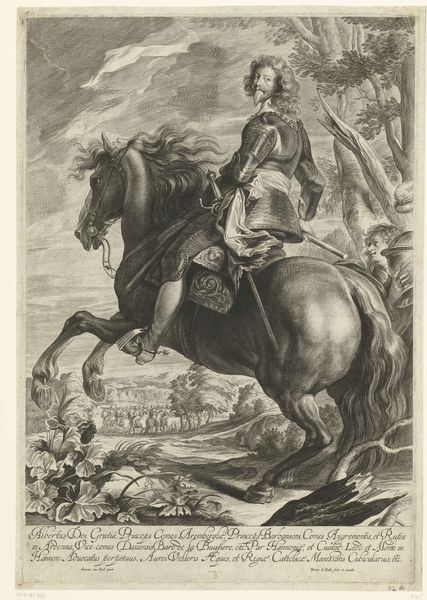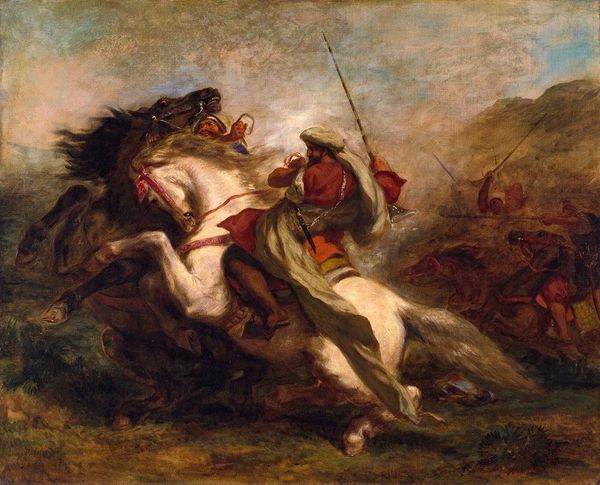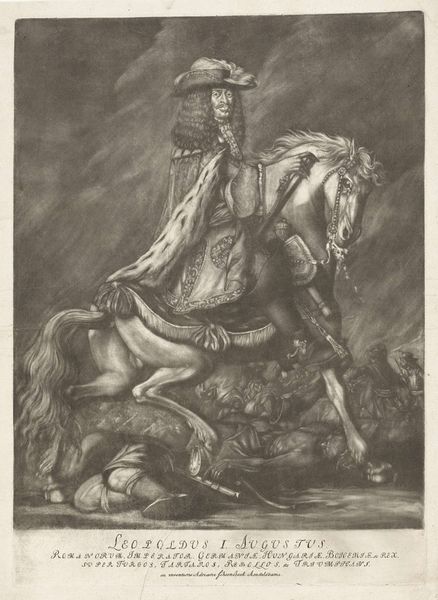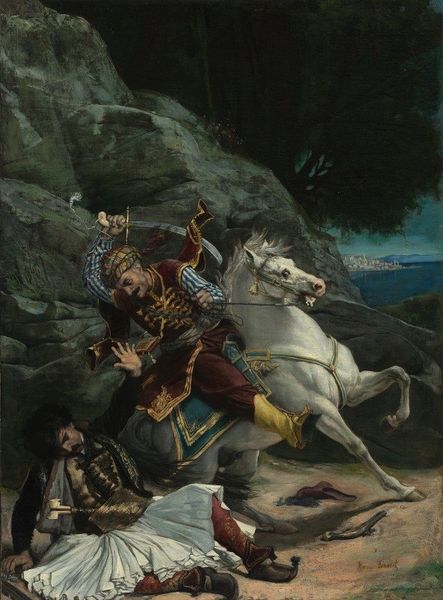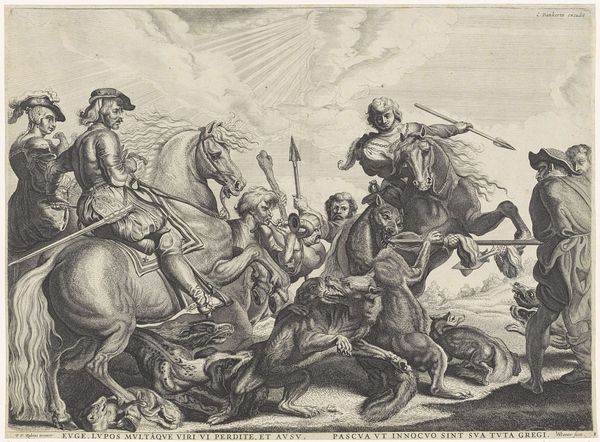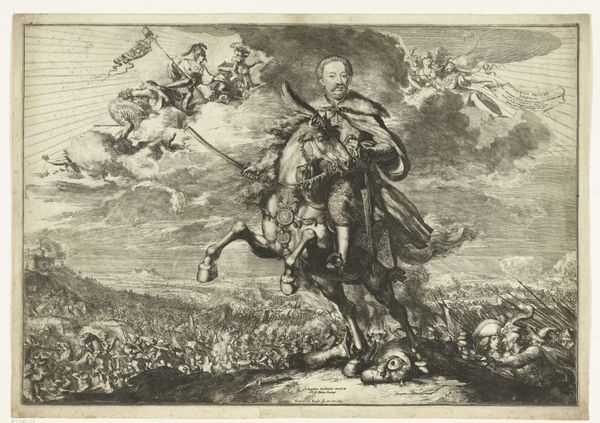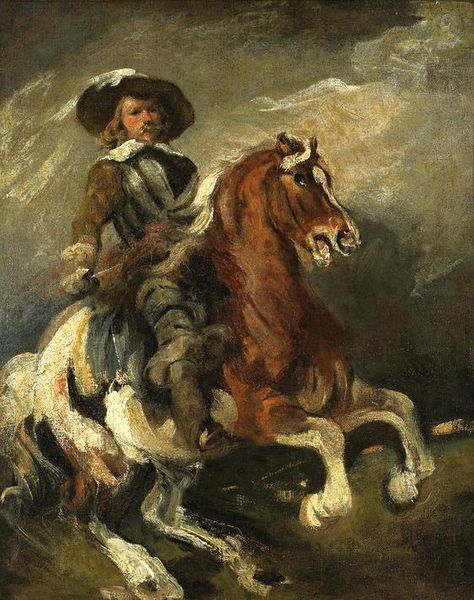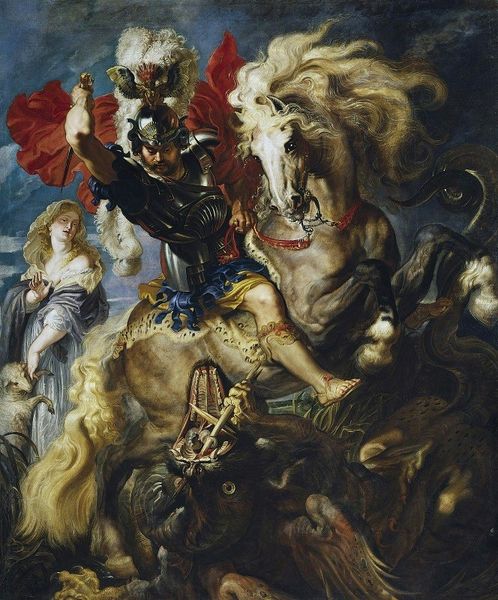
Dimensions: 80 x 64.1 cm (31 1/2 x 25 1/4 in.) framed: 107.3 x 90.8 x 11.4 cm (42 1/4 x 35 3/4 x 4 1/2 in.)
Copyright: CC0 1.0
Editor: Delacroix's painting, "A Turk Surrenders to a Greek Horseman," pulsates with energy and conflict. The swirling brushstrokes really convey the drama. What visual stories do you think Delacroix is trying to tell? Curator: Notice how Delacroix uses the horse and rider as a symbol of dominance. The Turk's pose, kneeling and disarmed, is laden with cultural implications of submission and defeat. What emotional impact does the stark contrast in their positions have on you? Editor: It definitely heightens the sense of tension and the power dynamic between the figures. It also makes me think about how the victors write history. Curator: Precisely. Delacroix is not just depicting a scene, he's actively participating in a visual narrative, embedding cultural biases through symbolic language. Editor: I see it now, the painting's more than just surface-level action; it’s steeped in symbolism. Curator: Indeed, it's a reminder that images carry powerful, often unspoken, cultural messages.
Comments
No comments
Be the first to comment and join the conversation on the ultimate creative platform.
